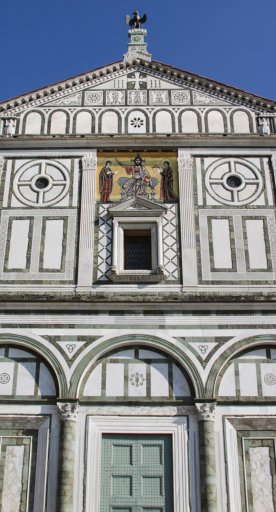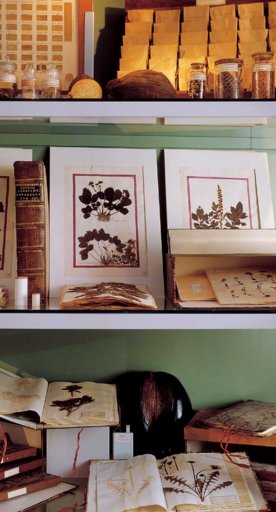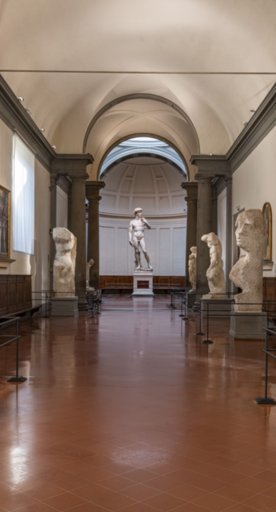Tondo Doni by Michelangelo
In the Uffizi Gallery, one of the artist's first paintings and the only one visible in Florence
One of the earliest paintings by Michelangelo Buonarroti is the oil and tempera on panel of the Holy Family with St. John the Baptist, kept in the Uffizi Gallery in Florence, and better known as Tondo Doni due to its circular shape and the name of the person who commissioned the work: Agnolo Doni, for whom the artist painted the piece in 1504, on the occasion of the marriage to Maddalena Strozzi.
Joseph, the Baby Jesus and the Virgin Mary form the centre of the painting with John the Baptist as a child behind them. This was Michelangelo’s way of conveying the connection between the Christian and pagan worlds and the generational shift: Jesus is the New Testament, who physically dominates his parents who symbolize the Old Testament. The nude figures allude to the world untouched by divine law and the young John the Baptist is the link between the Jewish Christian and pagan dimension.
The characters have precise profiles in order not to create any relationship with the background around them and the reversed movements of the figures create a rotating movement, which starts from the Virgin Mary’s twisted position and ends with the family embracing. Distinctive details include Mary’s lack of veil and her bare, muscular arms, as Michelangelo wanted to emphasize the Madonna’s great moral strength through physical vigour.









